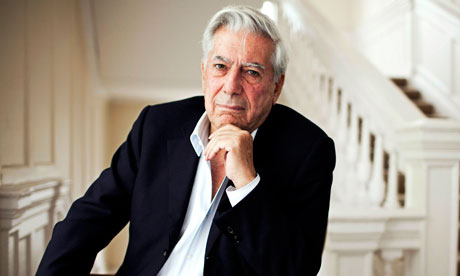
He saw Congolese slave workers with hands and genitals hacked off, and later reported on indigenous Peruvians burned alive or drowned. He returned to Europe, took part in the failed 1916 Easter Rising in Ireland, and was hanged in Pentonville prison. With a potted history this extraordinary, it's a wonder more novelists haven't taken up the tale of colonialist-turned-traitor Roger Casement. But fictionalising a life this complex has its pitfalls, and Mario Vargas Llosa's new novel (his first translated into English since winning the Nobel prize in 2010) staggers at times under the weight of research.
But first, let's give due credit. Principally remembered for the homosexual diaries used to undermine his reputation shortly before his execution as a traitor, Roger Casement has long awaited a writer of the stature of Vargas Llosa to focus on the real legacy of his life: how working as a British consul in the early 1900s, Casement's reports on colonial abuses in the Belgian Congo and in Peru were remarkable early exercises in international justice. Casement's journey from colonialist stalwart to Irish rebel was also bound up with some major events of literary modernism. It was on his Congo travels that he got to know Joseph Conrad, who was in turn mulling over the novella that would become Heart of Darkness. Later, Casement's doomed role in the Easter Rising instructed WB Yeats in "the terrible beauty" of martyrdom.
With raw material like this, we might have hoped for something like Pat Barker's Regeneration series, a gripping account shorn of historical cliches and bringing an era vividly to life. But Vargas Llosa hobbles his story from the start. Compelling moments are spoiled by clumsy exposition and a stubborn adherence to the mantra of tell-don't-show. "The same old story. The never-ending story," reflects Casement wearily at one point, a lament many readers might share. Vargas Llosa opts for repeatedly depicting similar atrocities, rather than selecting the illuminating detail. I lost count of the times variants of "scars on their backs, buttocks and legs" cropped up, but found the replication of Casement's meticulous note-taking deadened rather than heightened the horror.
What makes the novel readable is the character of Casement himself. A shy man, he does not baulk from facing down his enemies and, while shrinking from the abuses of power, can pull rank if he has to. In what is perhaps the novel's best touch, the extent of Casement's gay encounters is revealed only towards the end: late information that subtly reconfigures him in our eyes.

